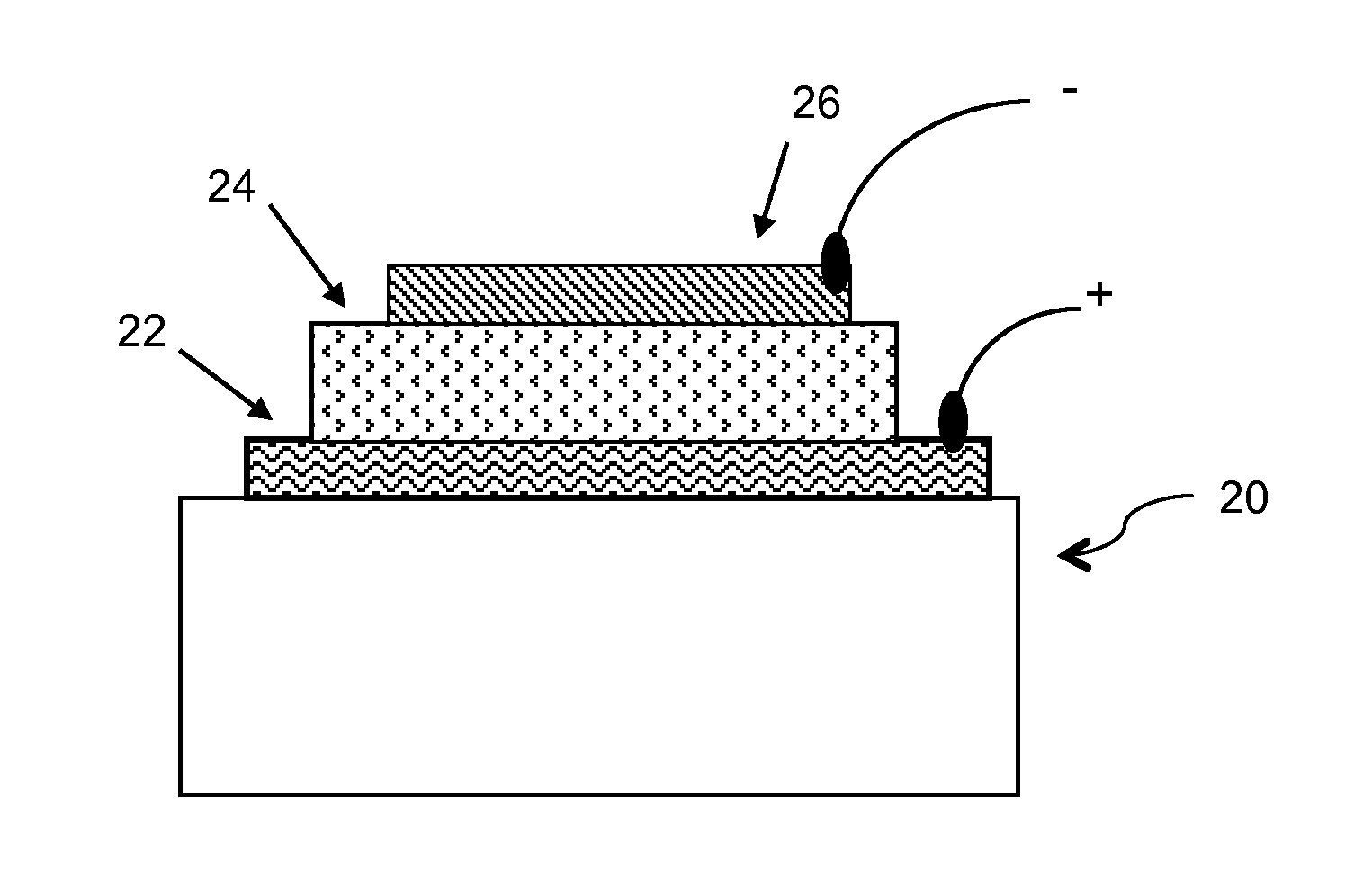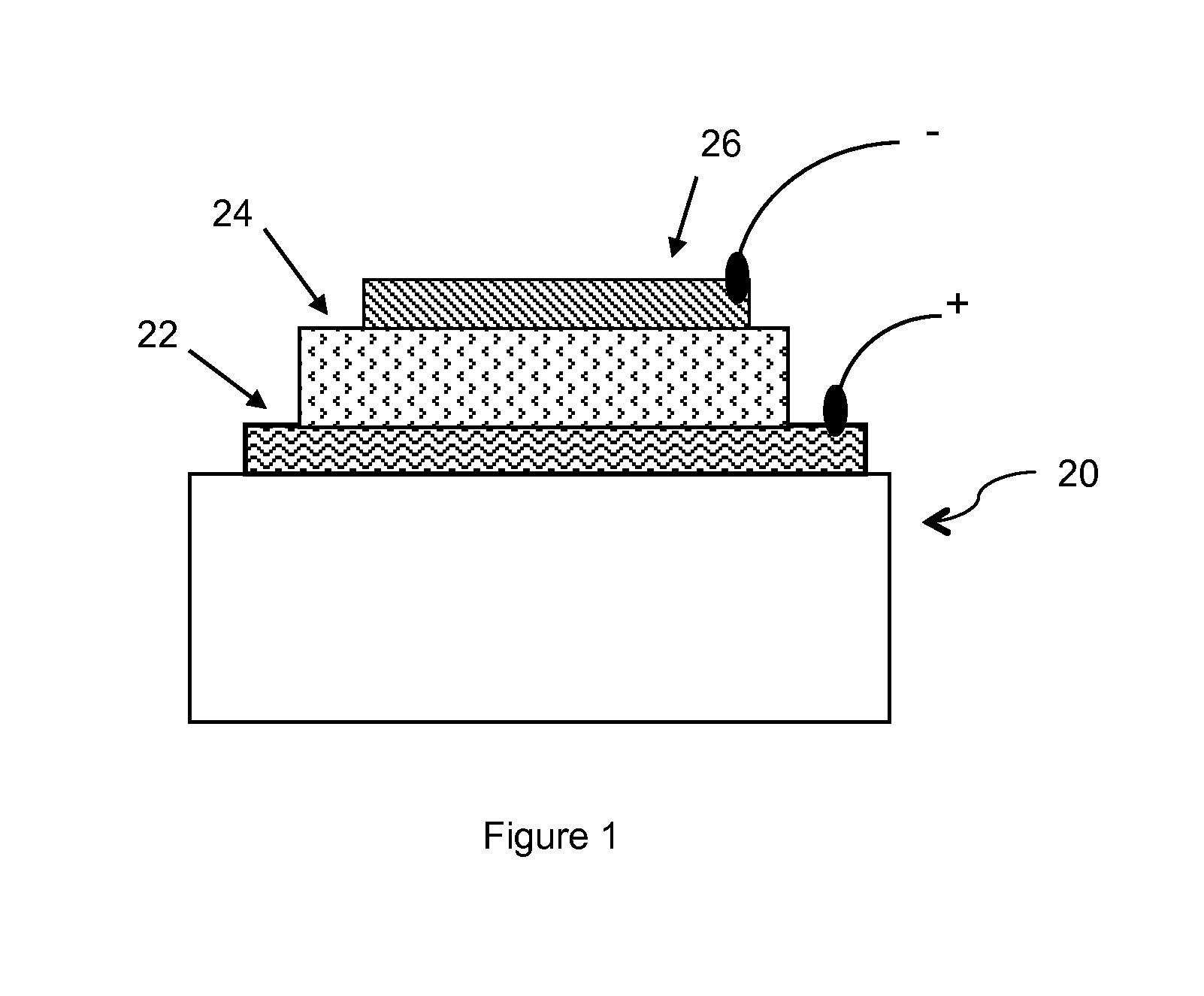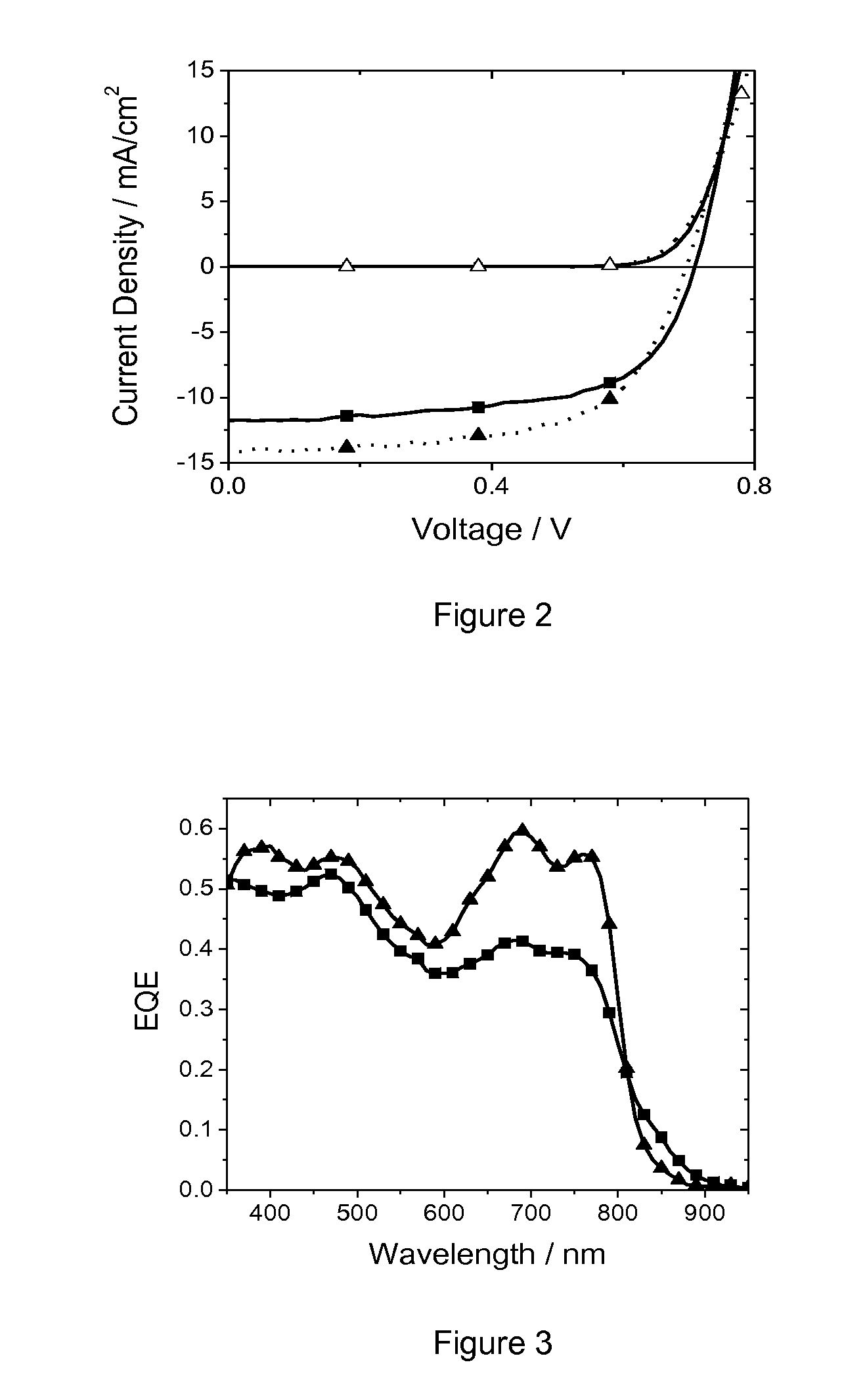Conjugated Polymers and Their Use in Optoelectronic Devices
a technology of conjugated polymers and optoelectronic devices, applied in thermoelectric devices, diketopyrrolopyrrole dyes, nanoinformatics, etc., can solve the problems of difficult to achieve an overall power conversion efficiency (pce) over about 5%, difficult to achieve p3ht air stability, and few reports of organic donor materials that provide efficient absorption. , good charge transport characteristics and chemical stability, the effect of optimizing optical absorption
- Summary
- Abstract
- Description
- Claims
- Application Information
AI Technical Summary
Benefits of technology
Problems solved by technology
Method used
Image
Examples
example 1
Synthesis of Monomers
Example 1A
Preparation of 3,6-bis-(5-bromo-4-dodecyl-thiophen-2-yl)-2,5-bis-(2-ethyl-hexyl)-2,5-dihydro-pyrrolo[3,4-c]pyrrole-1,4-dione (6)
Step 1: 4-Dodecyl-thiophene-2-carboxylic acid (1)
A 500 mL flask was vacuumed and backfilled with argon three times before di-iso-propylamine (5.06 g, 50 mmol) was added. The system was flushed with argon for 10 minutes before 300 mL of anhydrous THF was added. After the solution was cooled to −78° C., 20 mL of butyl lithium (2.5 M in hexane, 50 mmol) was added drop-wise. The resulting mixture containing lithium di-iso-propylamide (LDA) was stirred at −78° C. for 30 minutes before being warmed up to room temperature. 3-Dodecylthiophene (12.6 g, 50 mmol) was added drop-wise into the flask at 0° C. and the reaction mixture was stirred at 0° C. for 30 minutes before being cooled to −78° C. The system was purged overnight with CO2 gas, which was generated with dry ice at room temperature and dried with concentrated H2SO4. The pH of...
example 1b
Preparation of 3,6-bis-(5-bromo-4-dodecyl-thiophen-2-yl)-2,5-bis-(2-butyl-octyl)-2,5-dihydro-pyrrolo[3,4-c]pyrrole-1,4-dione (8)
Step 1: 2,5-Bis-(2-butyl-octyl)-3,6-bis-(4-dodecyl-thiophen-2-yl)-2,5-dihydro-pyrrolo[3,4-c]pyrrole-1,4-dione
A 100 mL flask was charged with 3,6-bis-(4-dodecyl-thiophen-2-yl)-2,5-dihydro-pyrrolo[3,4-c]pyrrole-1,4-dione 4 (4.3 g, 6.75 mmol), 5-iodomethyl-undecane (6.22 g, 21.0 mmol), Cs2CO3 (7.82 g, 24.0 mmol) and then purged with argon for 10 minutes before 150 mL of dimethylformamide (DMF) was added. The mixture was heated at 60° C. for 36 hours, then at 90° C. for 8 hours, and cooled to room temperature before 200 mL of hexane was added. The organic layer was washed with water (200 mL, 3 times), then dried over anhydrous Na2SO4. Black solids were obtained after removal of the solvent and precipitation from methanol. The product was purified by column with dichloromethane / hexane (v / v: 2 / 1 with Rf=0.25) as the eluent and weighed 1.43 g (21.7% yield from 4-d...
example 1c
Preparation of 3,6-Bis-(5-bromo-6-undecyl-thieno[3,2-b]thiophen-2-yl)-2,5-bis-(2-butyl-octyl)-2,5-dihydro-pyrrolo[3,4-c]pyrrole-1,4-dione
Step 1: 6-Undecyl-thieno[3,2-b]thiophene-2-carboxylic acid
3-Undecyl-thieno[3,2-b]thiophene (3.80 g, 12.9 mmol) was added into a 100 mL flask and the system was vacuumed and backfilled with argon 3 times before 30 mL of anhydrous THF was injected. The solution was cooled down to −78° C. for 30 minutes before 5.16 mL of But_Li (2.5 M in hexane, 12.9 mmol) was added, followed by addition of tetramethylethylenediamine (TMEDA, 1.5 g, 12.9 mmol). The mixture was heated to reflux for 1 hour before it was cooled down to −40° C. Then CO2 gas was bubbled through the solution overnight. Ethyl acetate (200 mL) was added and the resulting mixture was washed with 1 M HCl 3 times before it was dried over Na2SO4 to give 4.2 g (yield: 96.1%) of a brown powder.
1H NMR (DMSO-d6, 500 MHz): δ 8.07 (s, 1H), 7.26 (s, 1H), 7.25 (b, 1H), 2.74 (t, 2H, J=8.0), 1.75 (m, 2H), 1...
PUM
| Property | Measurement | Unit |
|---|---|---|
| humidity | aaaaa | aaaaa |
| humidity | aaaaa | aaaaa |
| power conversion efficiency | aaaaa | aaaaa |
Abstract
Description
Claims
Application Information
 Login to View More
Login to View More - R&D
- Intellectual Property
- Life Sciences
- Materials
- Tech Scout
- Unparalleled Data Quality
- Higher Quality Content
- 60% Fewer Hallucinations
Browse by: Latest US Patents, China's latest patents, Technical Efficacy Thesaurus, Application Domain, Technology Topic, Popular Technical Reports.
© 2025 PatSnap. All rights reserved.Legal|Privacy policy|Modern Slavery Act Transparency Statement|Sitemap|About US| Contact US: help@patsnap.com



